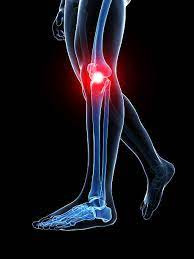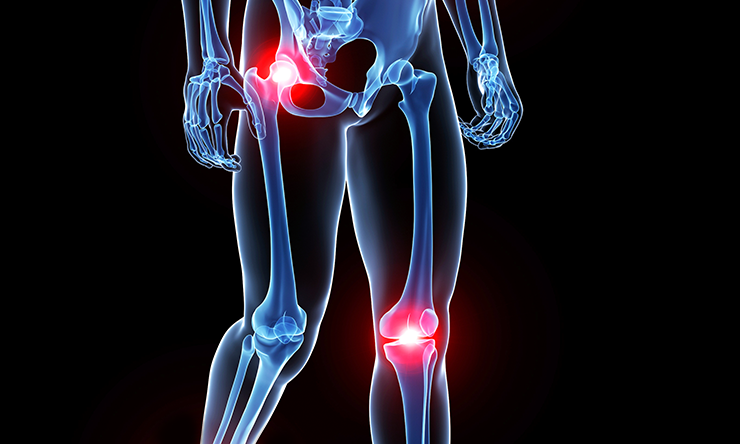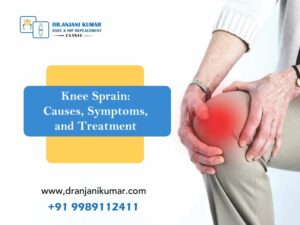One of the ligaments of the knee joint can be hurt when it suffers from a knee ligament injury. The intricate anatomy of the knee joint, which comprises bones, cartilage, ligaments, and tendons, works as a unit to support and stabilize the leg. The medial collateral ligament (MCL), posterior cruciate ligament (PCL), anterior cruciate ligament (ACL), and lateral collateral ligament are the four main ligaments of the knee joint (LCL).
Knee ligament injuries are commonly caused by an abrupt twisting or bending motion that strains the ligaments beyond their normal range of motion. Sports-related activities, such as football, basketball, or skiing, as well as falls, auto accidents, and other traumatic injuries, are common causes of knee ligament injury.
Depending on the kind and extent of the injury, different knee ligament injuries will present with different symptoms. Pain, swelling, stiffness, and trouble moving the knee are all possible signs of knee ligament damage. Rest, ice, compression, and elevation of the injured leg are common forms of treatment for knee ligament injuries. Other options include physical therapy, medicines, and, in some circumstances, surgery. The best course of therapy will depend on the kind and extent of the injury.
Knee ligament injury symptoms
Pain: The most frequent sign of knee ligament damage is pain. The front, back, or sides of the knee may be the site of the discomfort, which can be either severe or dull.
Swelling: Another typical sign of a knee ligament injury is swelling. The knee may feel warm to the touch and show signs of swelling.
Stiffness: The knee could feel tight or rigid, making it challenging to bend or straighten.

Instability: You may have instability or trembling in the knee and the sense that it is giving way or buckling.
Popping or clicking sounds: When you move your knee, or at the moment of the injury, you might hear a popping or clicking sound.
Difficulty walking: You may struggle to bear weight on the injured leg and limp or favour the other leg when you walk. It’s vital to remember that some injuries to the knee ligaments, especially minor sprains, may not manifest any symptoms or produce minor discomfort.
To determine the damage’s severity and the best course of action for treatment, you should see a doctor if you think you could have a knee ligament injury.
It’s crucial to remember that some injuries to the knee ligaments, especially minor sprains, may not manifest symptoms or produce minor discomfort. To determine the damage’s severity and the best course of action for treatment, you should see a doctor if you think you could have a knee ligament injury. You may be able to walk depending on how gravely wounded the knee ligament is. While a more serious injury may make walking difficult or impossible without help, a mild or partial ligament injury may allow you to walk with some difficulty.
It’s crucial to remember that walking with an injured knee ligament might lead to more damage and postpone healing, so you should seek medical assistance immediately if you think you might have one. Your healthcare provider can evaluate the severity of the injury and suggest proper therapy and rehabilitation for a speedy recovery and stop further harm.
The seriousness of the knee ligament injury is determined according to the degree of injury.
Knee ligament injuries are commonly divided into three grades:
- Grade 1: Mild stretching or small tears in the ligament.
- Grade 2: Partial tearing of the ligament.
- Grade: Complete tearing of the ligament.
Knee ligament injuries in grades 1 and 2 are less significant and frequently respond well to non-surgical treatments such as rest, ice, compression, and physical therapy. More severe Grade 3 knee ligament injuries frequently necessitate surgery to restore the torn ligament.

Recovery from Knee Ligament Injury
The time it takes for knee ligament damage to heal will depend on how serious the injury is and how it is treated. Healing from minor knee ligament injuries can take several weeks, whereas more serious injuries can take months.
For instance, the recovery time for a grade 1 sprain or strain of a knee ligament may be between two and four weeks when treated conservatively with RICE and strengthening exercises during physical therapy.
Depending on the injury’s severity and the chosen course of treatment, the time it takes for knee ligament damage to heal can change. Healing from minor knee ligament injuries can take several weeks, whereas more serious injuries can take months.
For instance, the recovery time for a grade 1 sprain or strain of a knee ligament may be between two and four weeks when treated conservatively with RICE and strengthening exercises during physical therapy.
It may take 4–8 weeks for a grade 2 knee ligament sprain or strain involving partial ligament tearing to heal with conservative and physical therapy.
Surgery may be necessary when a ligament is completely torn during a grade 3 sprain or strain, and the healing time ranges from 6 to 12 months.
To ensure proper recovery and avoid reinjury, engaging with a healthcare provider and adhering to their recommended treatment plan is crucial.
Dr Anjani Kumar has 20 years of experience and successfully performed 2000 knee replacement surgeries, 350 hip replacement surgeries, and 500 pelvic acetabular surgeries throughout his career. Please get in touch with us on Mobile: at +91 9989112411 and by E-mail: anjanikumar@ gmail.com




